Cover crops usable in Africa
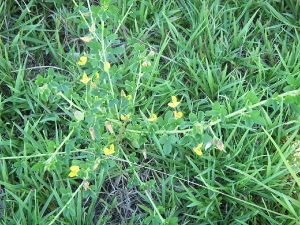
In agriculture, the term "cover corp," in the broad sense, has long referred to a "collection of plants covering the soil either permanently or temporarily, with the main agronomic objective of protecting the soil from erosion caused by wind and precipitation."[1]
Description
Covering the soil with a vegetative cover or mulch is part of agroecological practices aimed at protecting it.
The nature of the cover crops can vary based on various factors such as:
- The technical and economic orientation of the farm.
- Technical practices.
- Pedoclimatic specificities.
- Farmer's objectives.
- Available equipment.
Two types of coverings are possible:
- With living plants: A specific plant can be cultivated not for harvest but to protect and enrich the soil. This is referred to as cover cropping.
- With dead plants that form a mulch: It can result from the destruction of a cover crop or from residues after harvest.
Cover crops are used in various situations: in arid regions with low rainfall, where erosion is significant, or on poor soils. Additionally, it is particularly important to cover sandy soils.[2]

Benefits of covering soils
With the evolution of knowledge, today we recognize a multitude of advantages to soil cover beyond solely protecting against soil erosion. Cover crops (living or dead) have several benefits:
- Limits weed growth on the plot, reducing the need for manual weeding or synthetic herbicides, which are often highly polluting and nonspecific.
- Improves the water cycle by reducing evaporation and increasing infiltration, limiting runoff that washes away nutrients from the soil essential for plant growth.
- Also mitigates wind erosion.
- Cover crops typically have a higher surface reflectivity than bare soil, significantly reducing surface soil temperature.[3]
- Vegetative cover serves as a significant source of organic matter, especially when a variety of plants are used.
These effects create a favorable environment for the development of soil biological life. Plants from the Legume family (Leguminosae) are particularly suitable for use as green manure due to their ability to fix nitrogen from the air through symbiosis with a bacterium (Rhizobium). This naturally enriches the soil with nitrogen. However, using legumes alone tends to acidify the soil, so it is often beneficial to associate them with or rotate them with Poaceae (grasses).
Plant Material for Cover Crops
You need to select seeds adapted to the intended purpose.

Brachiaria spp
- Perennial grass.
- Objectives: Forage, drought resistance, rapid growth, and slow decomposition that suppresses weeds, particularly suitable for erosion control and field borders, well-developed root system, traps stem borers (Busseola fusca and Chilo partellus) and fall armyworms.

Stylosanthes spp
- Perennial legume.
- Objectives: Nitrogen fixation, forage, drought resistance, extensive root system, slow decomposition that suppresses weeds.

Mucuna spp
- Annual legume.
- Objectives: Nitrogen fixation, drought resistance, rapid decomposition limiting weed control, limited root system.

Pueraria phaseloides
- Perennial legume.
- Objectives: Good weed control, limited root system.

Pennisetum purpureum
- Perennial grass.
- Objectives: Especially suitable for erosion control and parcel borders, forage, rapid decomposition limiting weed control.

Crotalaria spp
- Annual legume.
- Objectives: Nitrogen fixation, rapid growth and slow decomposition suppressing weeds, relatively drought-resistant, production of biopesticides.

Desmodium intortum
- Perennial legume.
- Objectives: Forage, nitrogen fixation, requires good moisture for germination but relatively drought-resistant once established, good soil coverage, suppresses striga or witchweed (which parasitizes the roots of many crops such as maize, sorghum, or rice), repels stem borers (Busseola fusca and Chilo partellus) and fall armyworms.
Annual crops only persist for one year or one season. In contrast, perennial (perennial) crops can persist for several years.
Implementation of cover crops
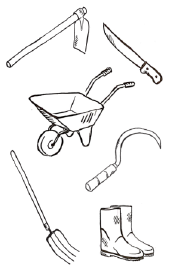
Necessary equipment
- Hoe: Weeding the plot and preparing the soil.
- Machete and sickle: Destroying the cover crop.
- Wheelbarrow: Transporting materials (and crop residues).
- Boots: Foot protection.
- Pitchfork: Handling crop residues.
Prepare the soil and weed out
Especially remove perennial weeds that might grow despite the cover crop.
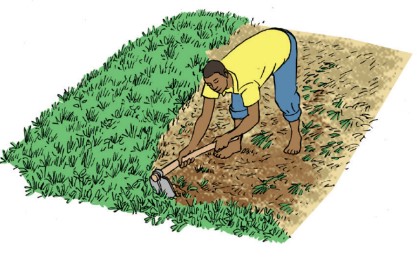
Sow the cover crop seeds
Seeds can be sown across the entire plot or in association with other plants.
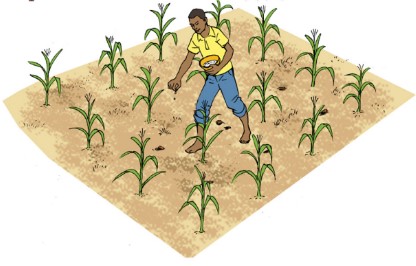
Wait for the cover to establish
It can be helpful to weed before the cover becomes thick enough to limit unwanted plants.
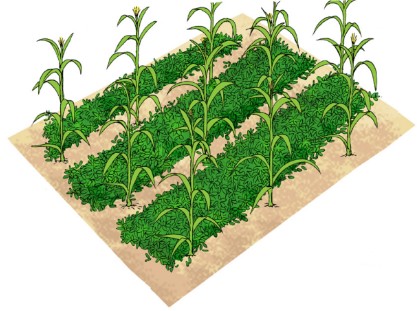
Transform the living cover into dead cover by cutting the plant roots
- Residues can be kept on-site for direct seeding under plant cover, or taken away for use as mulch or fodder.
- This operation must be done before seed formation to prevent the cover from self-seeding. Some plants can be allowed to go to seed for future harvesting and seeding purposes.
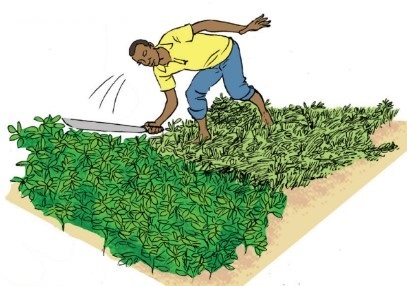
Challenges and constraints
- Production or purchase of cover crop seeds.
- Controlling its growth to prevent interference with other crops.
- Preparing the plot to eliminate perennials that might develop despite the cover.
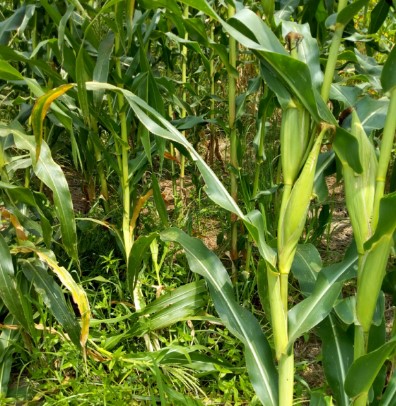
==Implementation of mulching techniques
The prerequisites for mulching implementation are the availability of a sufficient quantity of biomass and mastery of mulching techniques.
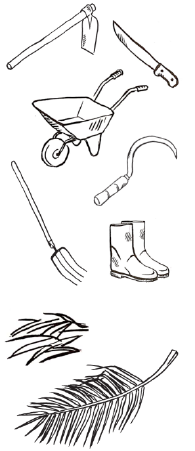
Necessary equipment
- Hoe: Clearing the plot and preparing the soil.
- Machete and sickle: Cutting straw and other plant debris.
- Wheelbarrow: Transporting materials and equipment.
- Boots: Foot protection.
- Pitchfork: Handling straw.
Materials and raw materials
- Straw.
- Tree leaves (fresh or dead).
- Rice husks.
- Dry grass (wild or cultivated).
- Stems of millet, corn, sorghum.
- Dry palm leaves.
- Wood chips.
- ...
Collecting plants or residues
They must be previously mowed and cut into pieces.
Sun-dry them for 2 to 3 days
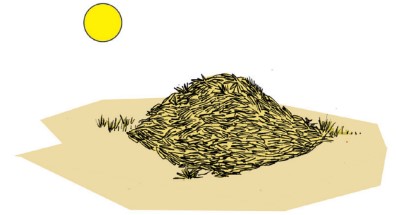
Prepare the soil and weed out
Remove especially the perennial weeds that might develop despite the cover crop.

Place the Mulch
Spread the mulch evenly, in a layer of 5 to 10 cm, covering the entire surface to protect.
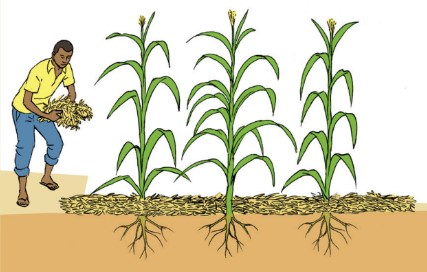
Difficulties and constraints
- Sufficient availability of mulch, which competes with other uses (compost, fodder, etc.).
- Transportation of straw.
- Spreading of straw and other plant debris in large fields.
- If the mulch is damp, it can lead to diseases in the stems in contact with the mulch or smother young plants.
- Mulch can provide a shelter for certain pests (such as slugs), as well as for their natural predators (such as carabid beetles).
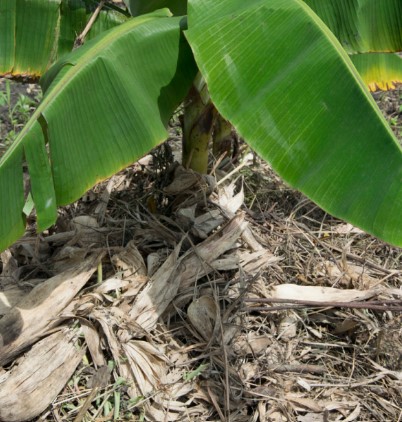
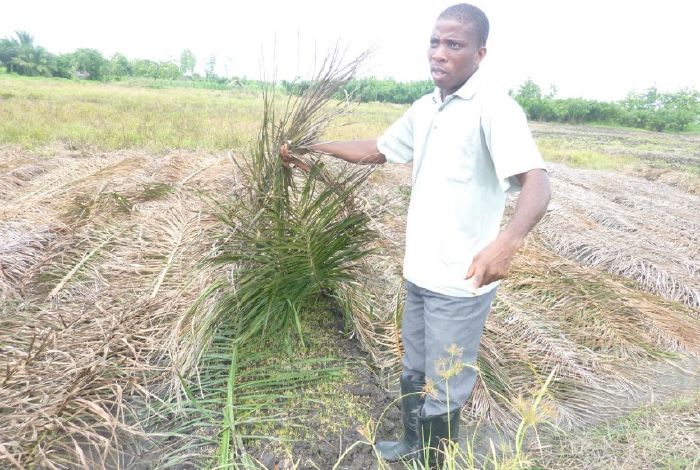
Sources
Manuel des bonnes pratiques agroécologiques - SECAAR.
This page was written in partnership with the Urbane project and with the financial support of the European Union.
- ↑ G. W. Langdale et al., Cover crops effects on soil erosion by wind and water, 1991. http://citeseerx.ist.psu.edu/viewdoc/download?doi=10.1.1.514.9458&rep=rep1&type=pdf
- ↑ Chivenge et al. 2007
- ↑ Ceschia et al. 2017

